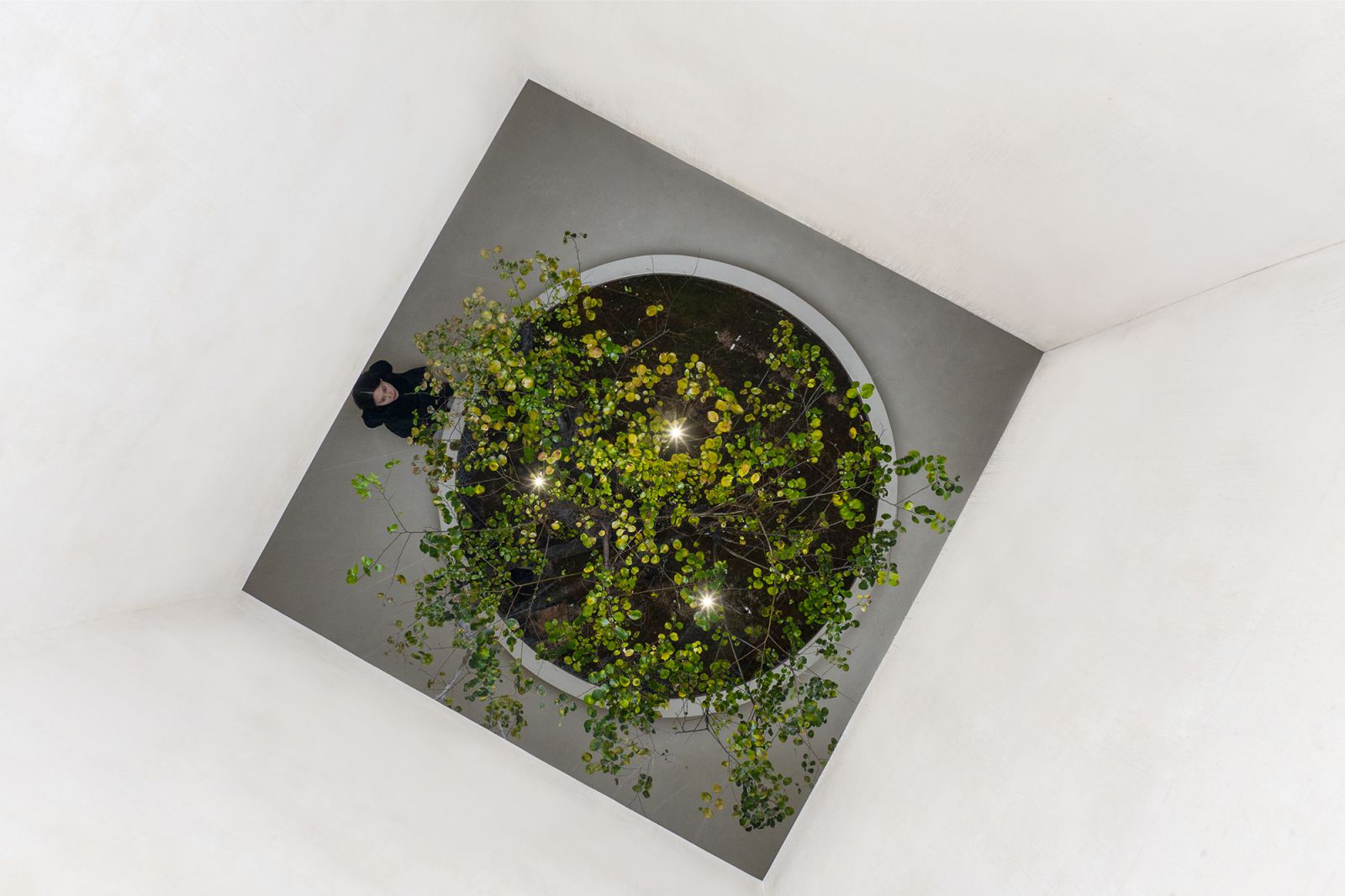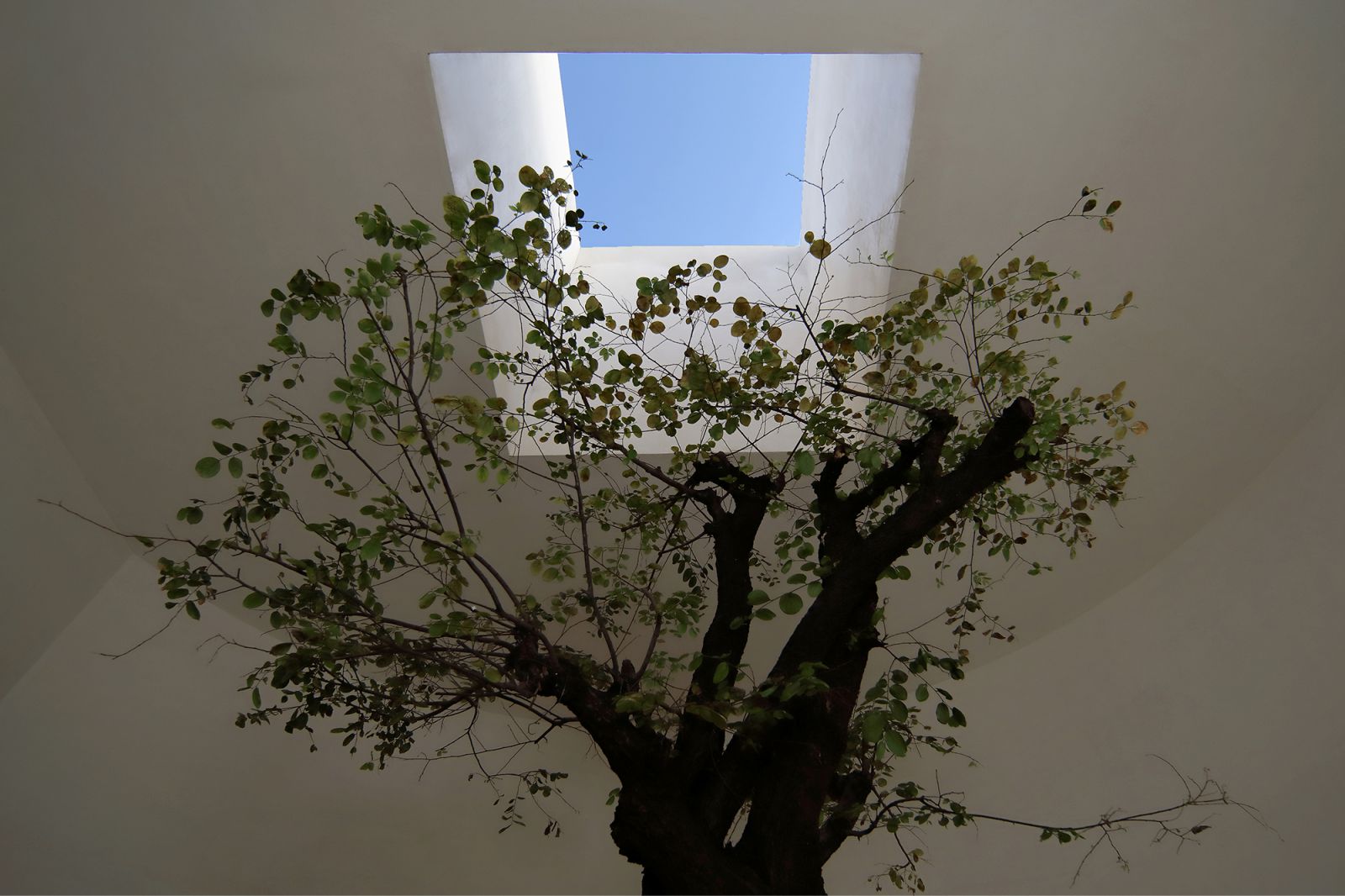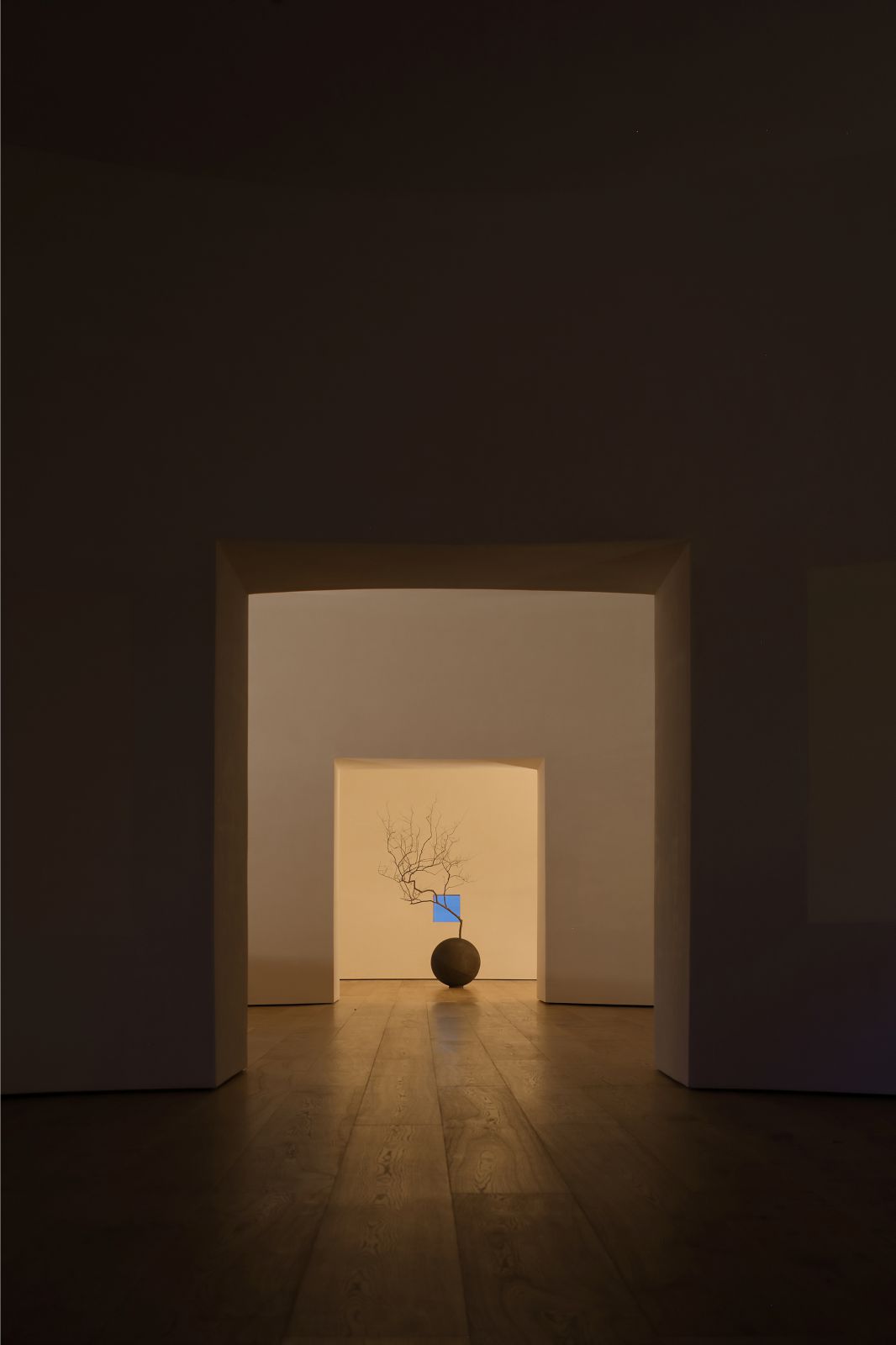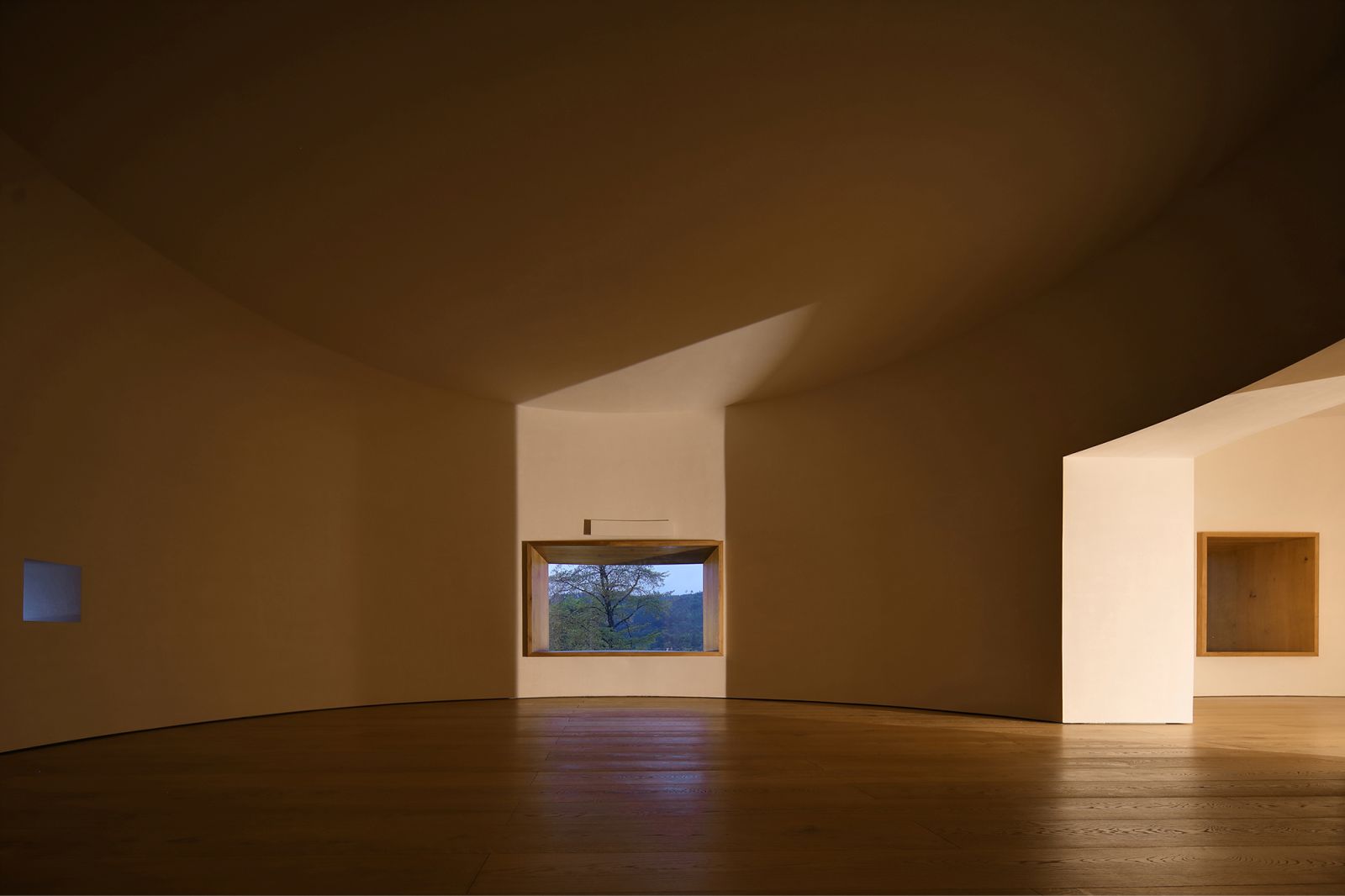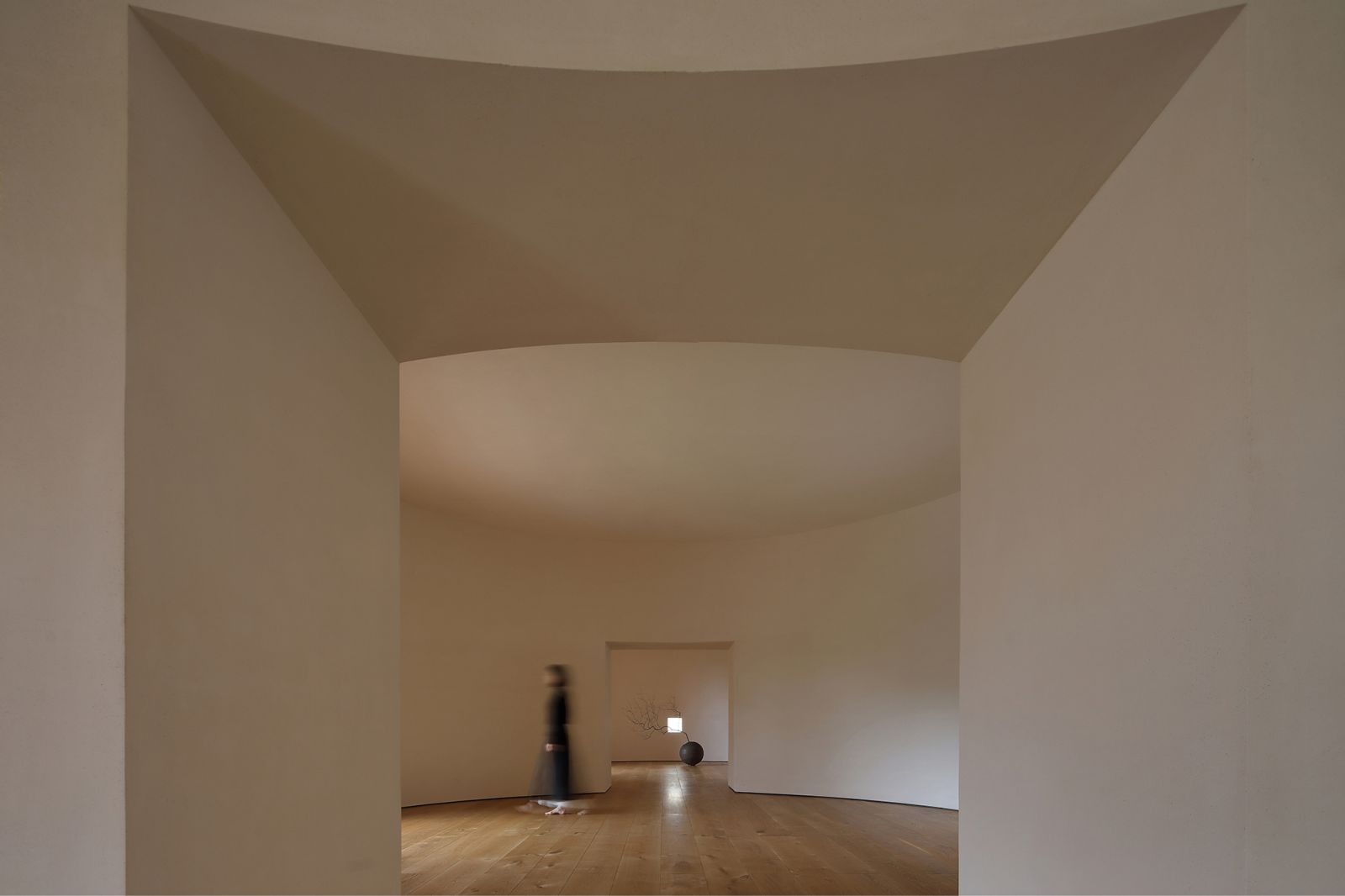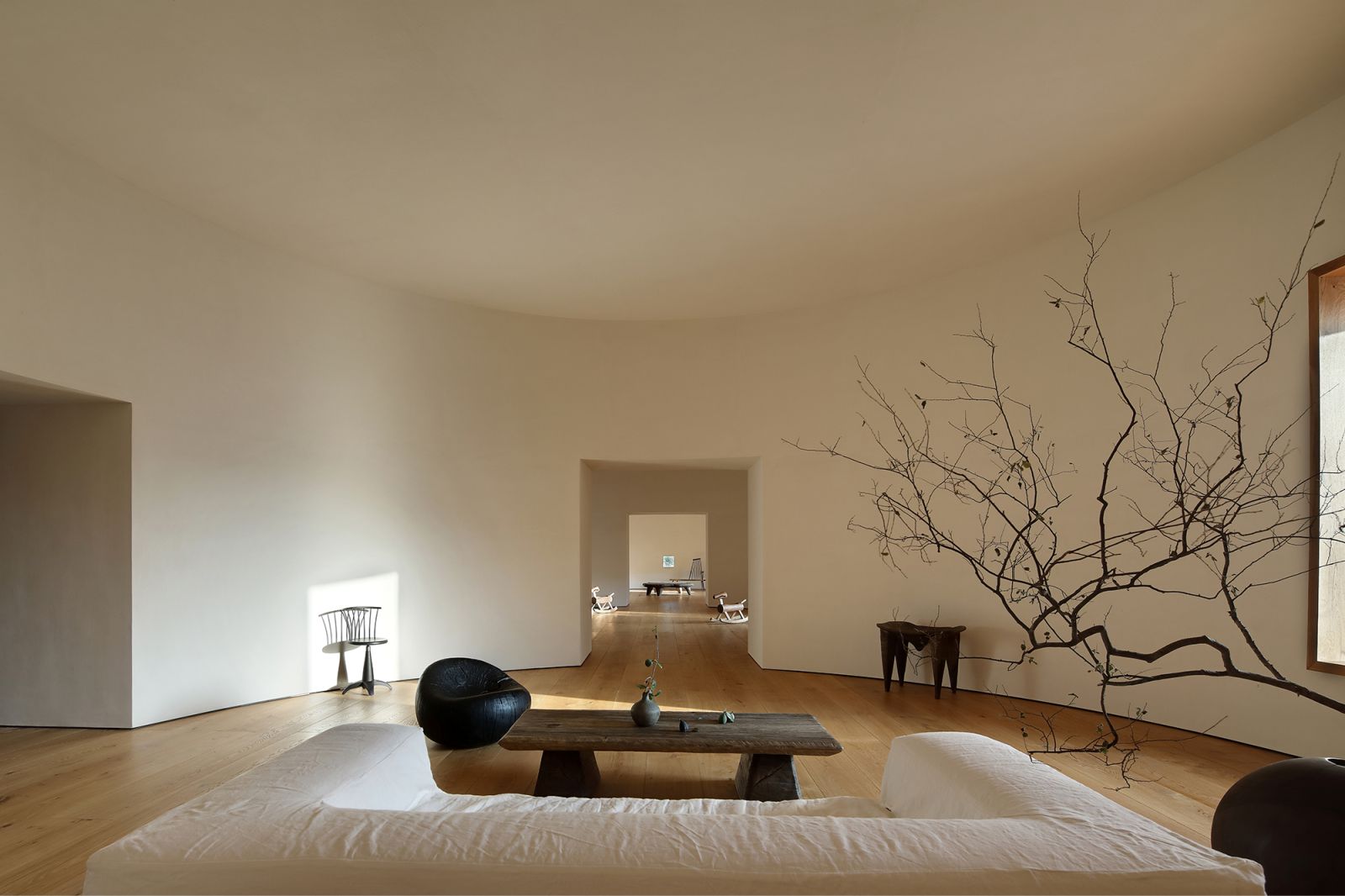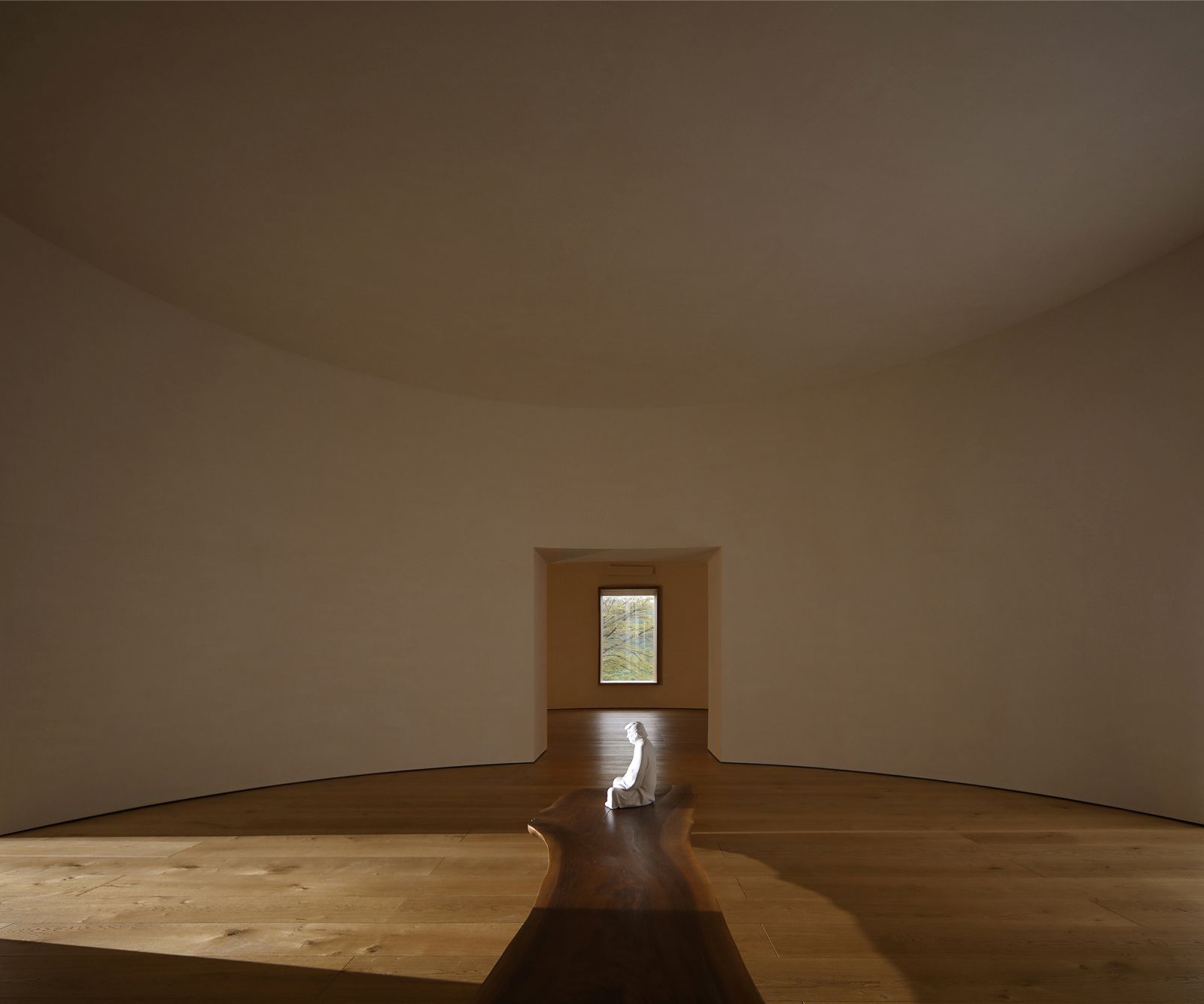The abandoned cement factory is situated at the foot of a hill, surrounded by verdant hills in the distance. With farmland nearby, one can hear roosters crow and dogs bark on the site. Refraining from massive demolition and reconstruction, Wanmu Shazi decided to retain most of the factory’s original structures during renovation.
Several giant “cement cylinders” left behind in the old factory, with their towering space, gave Wanmu Shazi design inspiration. While taking into account the core functional needs of his woodwork workshop, he also expects to attract more like-minded creatives through a variety of unique spaces.
Regenerated “cement cylinders”
Upon the completion of the factory’s basic renovations, Wanmu Shazi worked with other designers and artists to transform the interior space of several “concrete cylinders” on the site, which were successively converted into 15m-tall “Meditation Teahouse”, artist studio, woodwork exhibition hall, and the designer’s home, etc.
These distinctive spaces attract a growing number of visitors. Meanwhile, after repeated renovation interventions in the former cement factory, the designer’s understanding of space design has become increasingly clear. “Space is sometimes just like people. With a good figure, complexion and temperament, there is no need for much decoration.” Wanmu Shazi explained.

When he took on the renovation of the remaining six “cement cylinders” in the factory three years ago, Wanmu Shazi had a clear idea in mind. Perhaps because of such a conviction, he named this renovated space “Buduo” (means “not much” in Chinese). There is not much decoration, only pure spatial expressions and intimate material finishes. A narrow wooden bridge leads to “Buduo”, acting as a prelude that opens the journey.
Passing through the door formed by rusted steel and lightweight glass, the distinct ambience in the interior quickly calms down visitors. The foyer is accented by a green tree, which blurs the boundary between interior and outside along with moss and soil underneath and daylight brought in by the skylight. Like a courtyard, the foyer connects and leads to other five round spaces through door openings.

Each space is embellished with indoor landscapes, and meanwhile provides enframed view of beautiful outdoor mountain scenery through the subtly carved-out window openings, guiding visitors to step in and explore. Window openings of varied sizes not only introduce outside landscape, but also create a unique light environment in the interior.
The door openings of the six round spaces echo each other, producing a sense of layering and unique rhythms in the space. Tactile wooden floor, expansive thick walls, plain textured coatings, vents hidden near skirtings and unadorned ceiling unify the spatial ambience, and accentuates the pure sense of cohesion of the circular space.
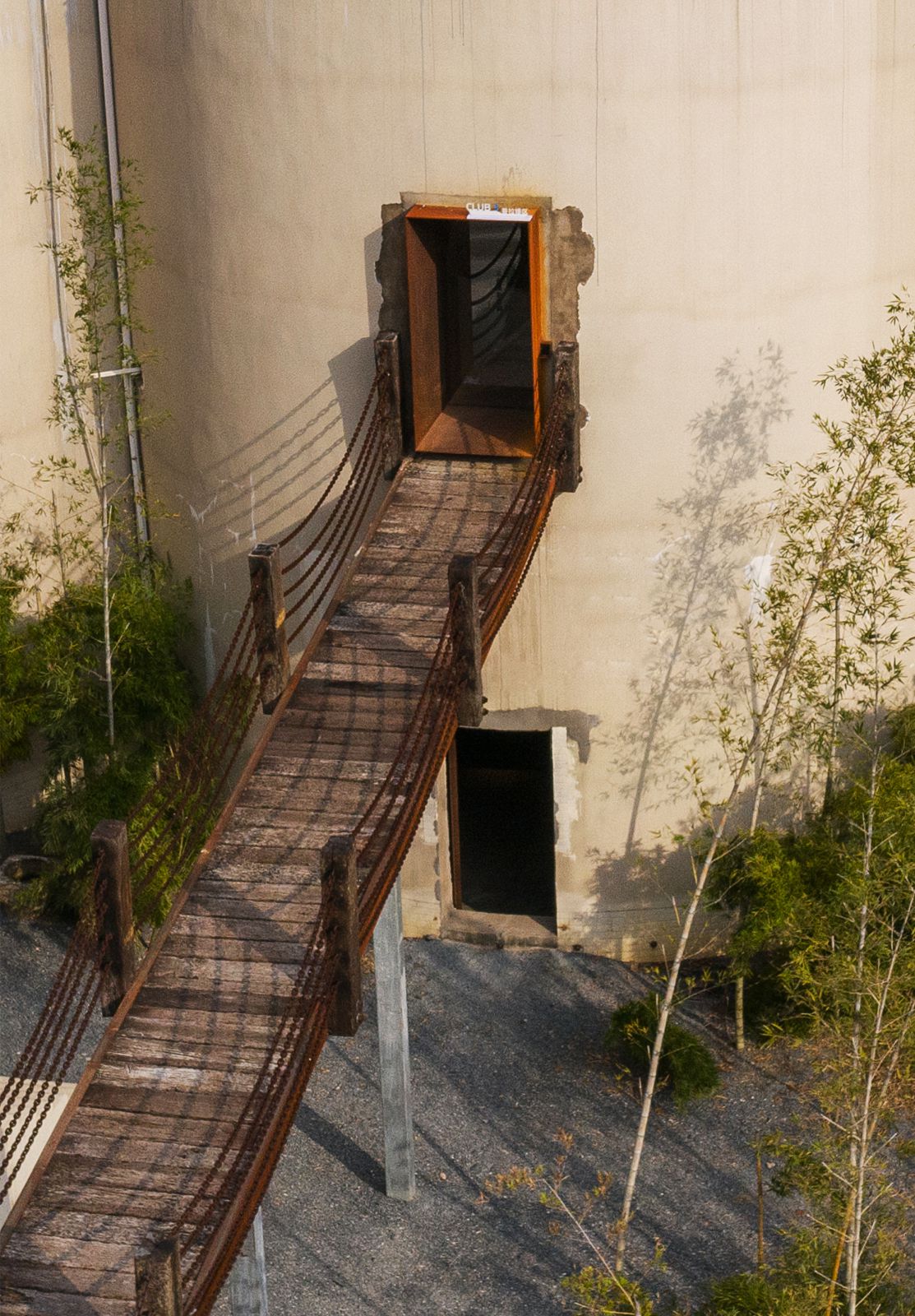
Physical scale-friendly design
The designer takes users’ physical comfort as the key criterion for a good space. Though the spatial scale is not large, this project took more than two years. The designer continuously adjusted and refined the design, and eventually created a unique spatial ambience that can be perceived upon entering it.
Wanmu Shazi describes the spatial ambience as “Qi”. He believes that quality design needs to focus on “Qi” rather than form, as the spatial atmosphere can not only stimulate sensory experience and but also evoke emotions. In this space, people cannot help slowing down the pace, to feel its inclusive “Qi”.

The soft sofa placed at the corner invites visitors to sit down and relax. The space seems to have the magic of relaxing both the body and mind, encouraging visitors to enjoy the outdoor scenery, dance or interact. Humor and serenity are fused in the space, which makes time seem to stop here.
Diverse possibilities
Operation of space is essential. After the successful transformation of the old cement factory, it has attracted numerous visitors such as creators and young artists. The renovated and repurposed factory offers enough manufacturing, exhibition and office spaces for the designer’s woodwork workshop Wanmu Gongfang.

More importantly, various distinctive spaces such as “Buduo” are created for receiving creative professional across the world, and offering venues for exhibitions and exchanges. Furthermore, accommodation and woodwork creation spaces are provided to excellent artists. The renewed spaces help form a complete chain from R&D to execution and mass production for Wanmu Gongfang.
“Young creatives and craftsmen need a better platform for creation.” With a mindset of having fun and exploring diverse roles, Wanmu Shazi has established a chain for creativity incubation. The various unique spaces he created in the former old factory have attracted the public to know about cultural and creative industry and products, and meanwhile offers a platform for supporting art creation and growth of young creatives. Source by Wanmu Shazi.

- Location: Nanshan Village, Fengnan Farm, Xinmin Town, Xiamen, China
- Architect: Wanmu Shazi
- Lighting design: Wanmu Shazi
- Client: Wanmu Shazi
- Area: 300 sqm
- Year: 2022
- Photographs: 1988 Photography Studio / A Qi, Courtesy of Wanmu Shazi


